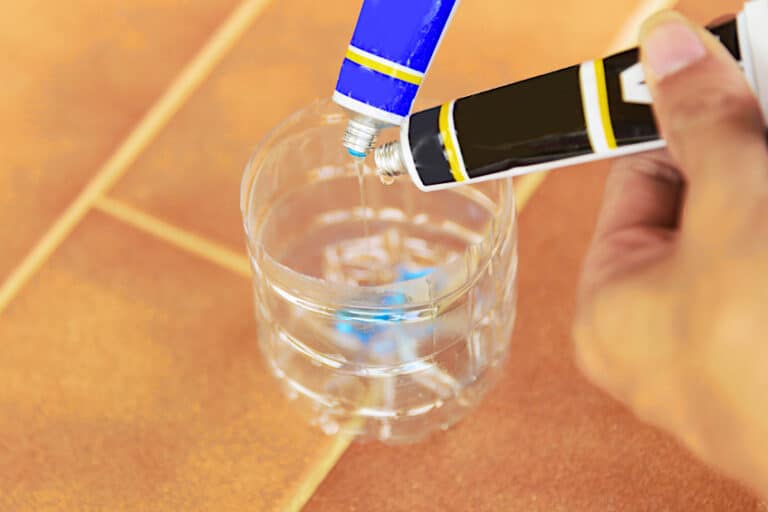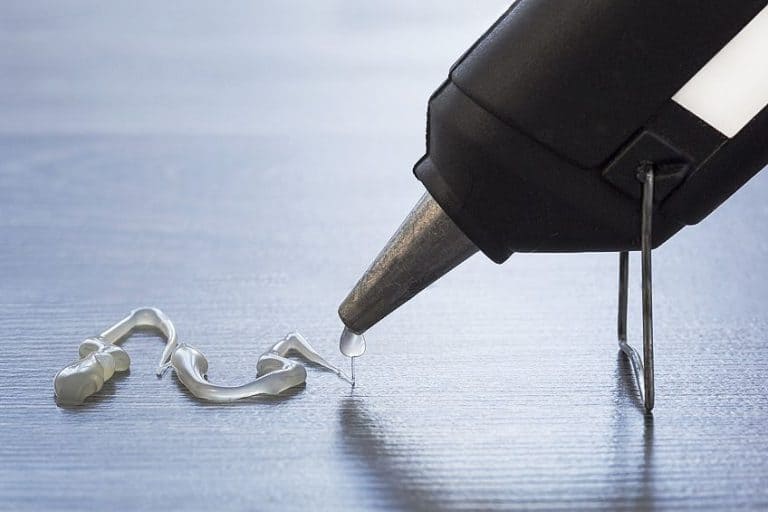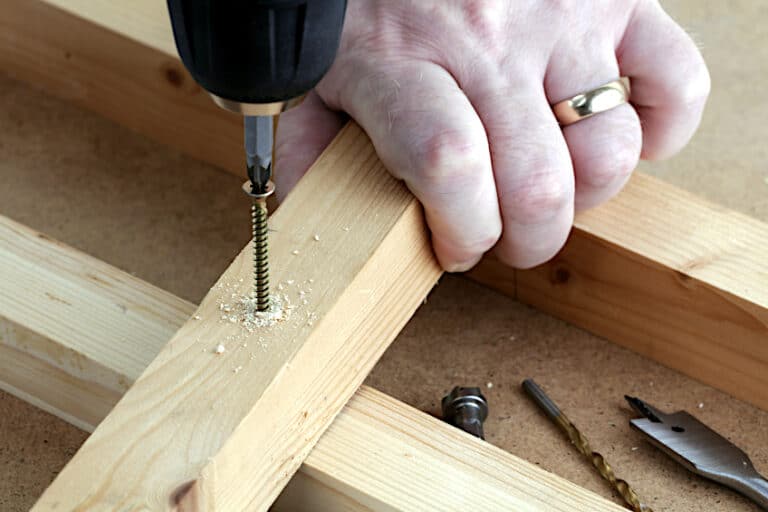How to Sand Spindles – From Grit to Gloss
Sanding spindles can be both a meticulous art and a rewarding task in woodworking. From intricate staircases to elegant furniture pieces, spindles add a touch of craftsmanship and charm to any project. In this article, we delve into the art of sanding spindles, exploring techniques, tools, and tips that elevate your woodworking prowess. Whether you’re a seasoned woodworker or a DIY enthusiast, mastering the art of sanding spindles opens doors to creating stunning pieces that stand out for their finesse and beauty.
Table of Contents
Key Takeaways
- Proper preparation of workspace and materials is essential before sanding.
- Selecting the correct sandpaper grit and employing the right technique are key to achieving a professional finish.
- Post-sanding, it is important to clean up and maintain tools for future woodworking projects.
Preparing Your Workspace and Materials
Sanding spindles is a detailed aspect of woodworking that requires patience and attention to detail. These slender, cylindrical parts of furniture like chairs or staircases often feature intricate turnings, making them more challenging to smooth than flat surfaces. Using the right techniques and tools, however, can lead to a professional finish and enhance the overall appearance of the woodwork. Selecting the appropriate grit of sandpaper is crucial, as it influences the effectiveness of sanding and the final finish of the spindles. The process begins with preparing the workspace and ensuring that all necessary materials are within reach.

This prep stage is key to a smooth sanding experience. The workspace should be clean and well-lit, with adequate ventilation to handle any dust generated during the task. Materials, including a variety of sandpapers, protective equipment, and possibly specialized tools for contoured surfaces, should be assembled before starting. Once everything is set up, the actual technique of sanding the spindles comes into play. Operating with a gentle touch and moving along the grain of the wood helps preserve the spindle’s shape and results in a smoother finish. Before beginning your spindle sanding process, ensuring a well-prepared workspace and having the right materials on hand are crucial steps for a successful and safe woodworking project.
Selecting Proper Sandpaper and Tools
When choosing sandpaper, consider the spindle’s material. Use coarser grits like 80 or 100 to remove existing finishes or to work out imperfections, while finer grits (220 or higher) are essential for smoothing the wood to a refined finish. The appropriate tools, such as a spindle sander, orbital sander, detail sander, or sanding blocks, should be selected based on the spindle size and the intricacy of its design.
For tight spaces, a Dremel tool might be beneficial.
Protective Gear and Precautions
Always wear the necessary protective gear: safety glasses, dust mask, and gloves to protect against sawdust and debris. Ensure loose clothing is secured to avoid getting caught in moving parts. Operating areas should be well-ventilated, and all safety precautions for using power tools must be observed.
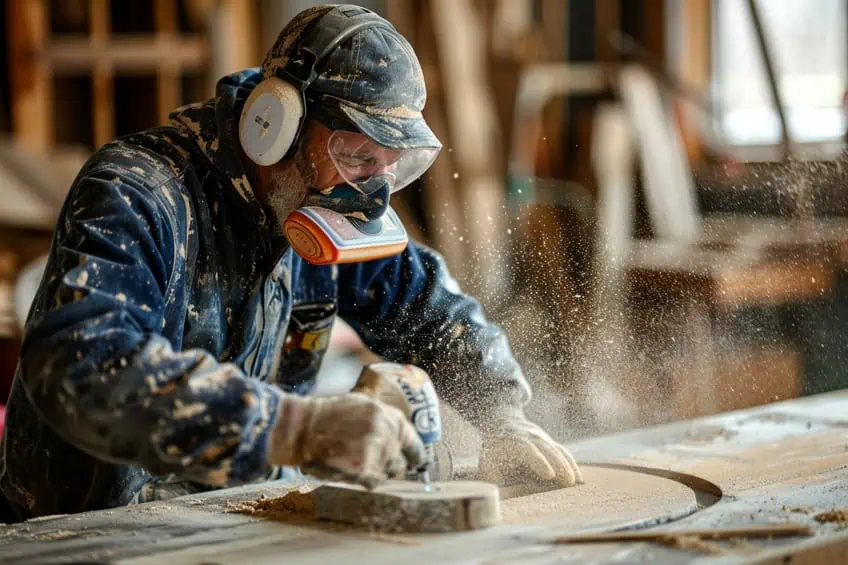
Securing the Spindles
To maintain control while sanding, spindles need to be firmly secured. Use clamps or a vise to hold them in place, ensuring they do not rotate or rip from your grasp. This not only protects the woodworker but also preserves the integrity of the woodworking project.
Cleaning and Prepping Spindles
Start by removing any old finish or debris from the spindles, which could clog the sandpaper and hinder the sanding job. Depending on the state of the spindle, a chemical stripper may be used to aid in removing old paint or finishes before the manual labor begins.

Grits and Their Uses
The rule of thumb for sandpaper grits is to start with a coarser grit to do the heavy lifting, then move to a finer grit for a smooth finish. A suggested progression might be to start with a grit of 80, then move to 120, and finish with 220. A table could illustrate grit use:
| Grit | Use |
|---|---|
| 80 | Removing rough material and old finish |
| 120 | Intermediate sanding, smoothing out scratches |
| 220 | Final pass, achieving a smooth finish ready for paint or stain |
Sanding Techniques for Spindles
When sanding spindles, precision and the right choice of tools determine the quality of the final smooth finish. Two common approaches are hand sanding for meticulous detail and using power tools to efficiently tackle larger volumes or rougher surfaces.
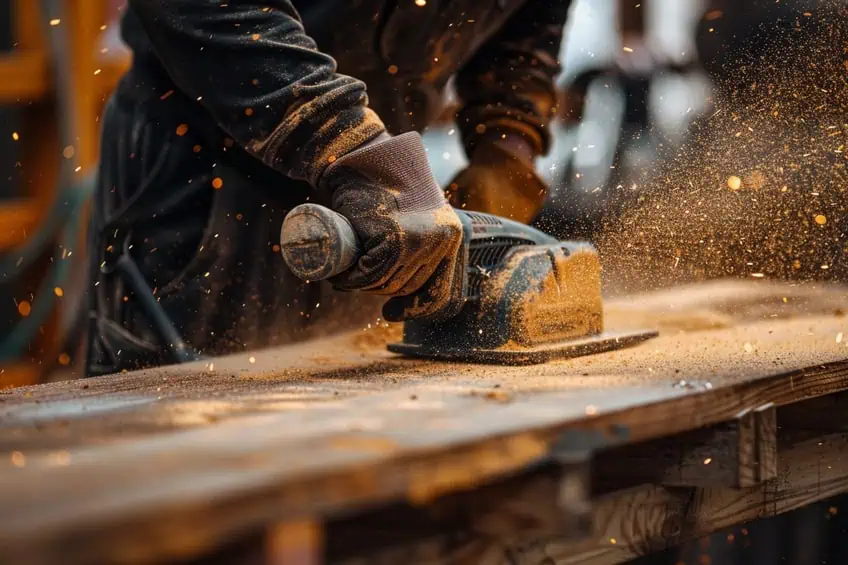
Hand Sanding for Precision
Hand sanding is ideal for achieving a precise and smooth finish on spindles. It is especially useful for spindles with intricate details or for projects requiring a delicate touch. Here’s how one might approach it:
- Strip and tape: Begin by stripping the spindle of any old finish. Tape off any areas not intended for sanding to protect them.
- Sanding tool selection: Depending on the spindle’s intricacy, choose a sanding tool that will conform to the curves and edges. Options include flexible sandpaper, abrasive sponges, or customized sanding blocks.
- Sanding process: Start with a coarse grit sandpaper to remove any imperfections. Continue with a medium grit to start smoothing the surface. Finish with a finer grit sandpaper for a polished effect.
Using Power Tools Effectively
Power tools can expedite the sanding process of spindles, suitable for larger projects or when working with multiple spindles such as balusters or spindle legs.
- Power tool selection: Choose a power sander that is suitable for the job, like an orbital sander, belt sander, or a detail sander with sanding sleeves for tight spots.
- Jig and holder: Use a jig or holder to keep the workpiece stable while applying even pressure with the power tool.
- Sanding technique: Begin with a sanding belt or sanding sleeve appropriate for the material and contours of the spindle. Apply even pressure to avoid gouges and ensure a uniform removal of material across the spindle. Progress to finer grits as the surface becomes smoother to avoid scratches and prepare it for finishing.
Using these techniques, one can effectively sand spindles to a smooth finish, preparing them for painting, staining, or other types of finishes.
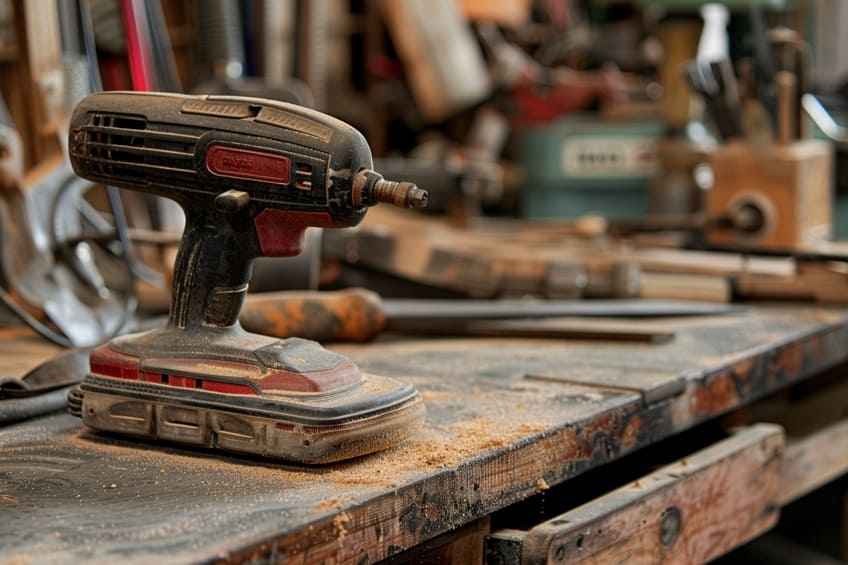
The Sanding Process
Sanding spindles require precision and patience, with an emphasis on maintaining even pressure and achieving a smooth surface. Whether working on a staircase banister or chair legs, the goal is to create a uniformly sanded area that feels smooth to the touch.
Detail Sanding Tips for Tight Spaces
For areas that are difficult to reach, such as tight grooves or intricate carvings on spindles, one must employ a strategic approach. The following are key methods:
- Hand sanding: Utilize sandpaper wrapped around fingers or custom-shaped dowels to match the contour of tight spots. Start with coarser grit for shaping and gradually move to finer grit for a smoother finish.
- Abrasive cords and tapes: These flexible sanding materials are ideal for looping around spindles and pulling back and forth to sand evenly around the entire circumference.
- Specialized tools: Use contoured sanding grips or foam sanding pads that are specifically designed to navigate the challenging curves of spindles.
Maintaining even pressure is crucial, as applying too much force can lead to uneven surfaces or damage the intricate woodwork.
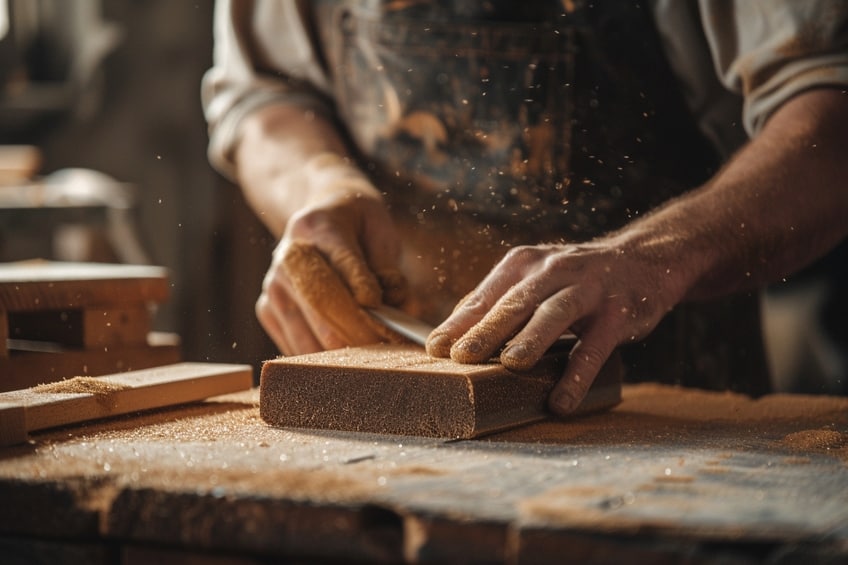
Finishing Touches and Final Inspection
Once the spindles have been thoroughly sanded, the final touches ensure a professional and sleek appearance.
- Fine-grit sandpaper: Smooth the wood surface with fine-grit sandpaper, such as 220 or higher, for the last pass. This step is essential to achieving the desired smooth surface.
- Visual inspection: Examine the spindles from various angles under good lighting to spot any remaining rough areas or sanding marks.
- Tactile inspection: Run hands along the spindle to feel for inconsistencies. An even and smooth surface indicates that the sanding process is complete.
- Clean up: Remove any dust or debris from the sanded spindles with a lint-free cloth or a tack cloth. If they’re preparing for a finish, ensure they are completely clean for even application of the chosen product.
By methodically sanding spindles with the correct techniques and attention to detail, one can achieve a professional-level finish on their woodworking projects.
Post-Sanding Cleanup and Maintenance
Once the sanding process is complete, a thorough cleanup and proper maintenance are essential to ensure a professional result and longevity of both the project and the sanding equipment.
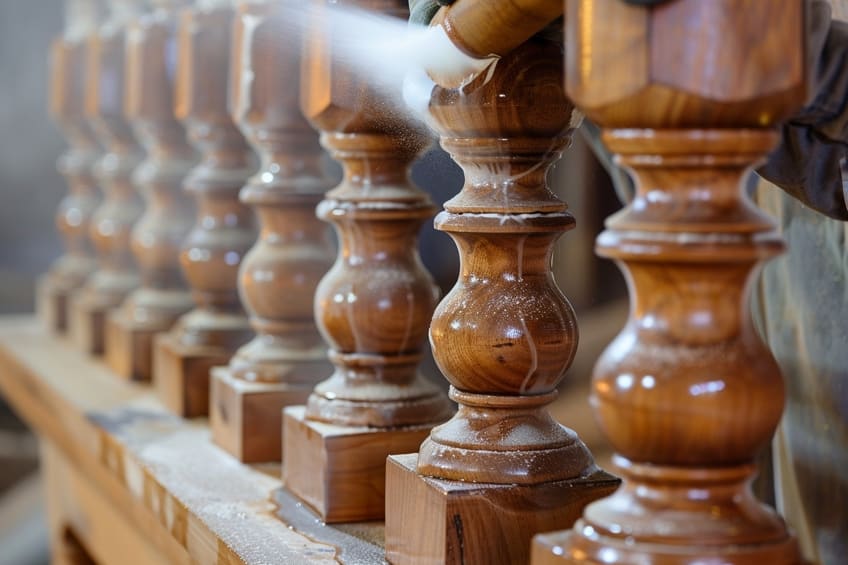
Removing Residual Sawdust and Debris
After sanding chair spindles, residual sawdust and debris must be removed to prepare for finishing. Techniques include:
- Vacuuming: A vacuum with a brush attachment can gently remove sawdust from surfaces without scratching.
- Tack cloth: Wipe down the wood with a tack cloth to pick up even the finest dust particles.
- Compressed air: Use short bursts to blow debris out of tight corners and details where a brush can’t reach.
Ensure that protective gear like goggles and a dust mask is worn during this step to prevent inhalation or eye irritation from the sawdust.
Applying Finishes and Protectants
A smooth finish on the spindles not only looks professional but also protects the wood:
- Finishing: Apply the desired finish, whether it be stain, varnish, or paint, using a brush or cloth compatible with the product.
- Steel wool: Between finish coats, use fine steel wool to lightly buff the surface, then remove the resulting debris before applying the next coat.
Both steps are crucial in achieving a long-lasting, smooth surface that highlights the craftsmanship of the woodworking project.

Proper Storage and Care for Sanding Tools
To maintain the quality and efficacy of sanding tools:
- Sanding blocks: Store sanding blocks away from moisture to prevent warping.
- Sanding belts and sleeves: Hang sanding belts and sleeves on a rack to avoid creases or damage.
- Cleaning: Regularly clean tools to prevent buildup that can affect performance.
Proper care ensures that the tools are ready for the next woodworking project, and helps maintain control during the sanding job.
Evaluating the Sanding Job
Evaluation is the final step to ensure the quality of the work:
- Visual inspection: Look over the wood surface in good lighting to check for any missed spots or inconsistencies.
- Tactile inspection: Run a bare hand along the surface to feel for imperfections that may need further sanding.
Craftsmen know that a well-evaluated sanding job is indicative of the overall attention to detail in their woodworking projects.

As you conclude your journey into the world of sanding spindles, remember that patience and precision are your allies. Embrace the artistry of woodworking as you transform rough surfaces into smooth, refined masterpieces. With the right tools, techniques, and a dash of creativity, every spindle becomes a canvas for your craftsmanship. So, go forth with confidence, knowing that your attention to detail will yield not just well-sanded spindles, but also admiration for your woodworking prowess. Happy sanding and may your projects shine with the beauty of finely polished wood!
Frequently Asked Questions
What Is the Most Efficient Technique for Sanding Spindles by Hand?
One should wrap a piece of sandpaper around the spindle and sand in the direction of the wood grain. Starting with a coarse grit for shaping and moving to finer grits for a smoother finish is recommended. They should pay special attention to maintaining the spindle’s integrity while achieving an even surface.
Which Type of Electric Sander Is Best Suited for Sanding Furniture Spindles?
For furniture spindles, an oscillating spindle sander or a detail sander with a flexible sanding pad is often the best tool. It allows for precise sanding around the curves and edges without damaging the detail work of the spindle. They should use light pressure to avoid gouging the wood.
What Grit of Sandpaper Should Be Used for Sanding Stair Spindles for Optimal Results?
Starting with a medium grit, such as 100-150, is common practice for initial sanding to remove any old finish or rough patches. They should finish with a fine grit, such as 220 or higher, to achieve a smooth, polished surface ready for staining or painting. Regular inspection during the sanding process helps ensure an even finish.

I have been into woodworking since 2005 and woodturning since 2011. Because of my love for wood and woodworking, I started woodhappen.com to teach other enthusiasts about how to finish and seal wood, the best woodworking tools, the different types of wood, and everything else related to woodworking! Read more about me here.


